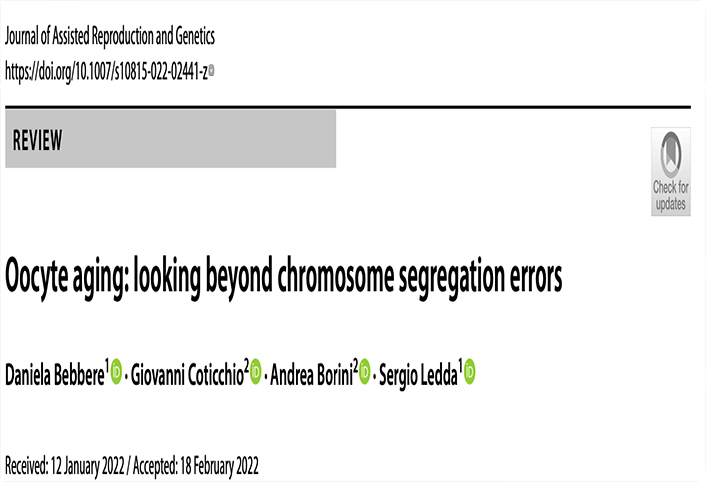

Daniela Bebbere, Giovanni Coticchio, Andrea Borini, Sergio Ledda
Journal of Assisted Reproduction and Genetics https://doi.org/10.1007/s10815-022-02441-z – Received: 12 January 2022 / Accepted: 18 February 2022 / Published: 25 February 2022
Abstract
The age‐associated decline in female fertility is largely ascribable to a decrease in oocyte quality. This phenomenon is mul- tifaceted and influenced by numerous interconnected maternal and environmental factors. An increase in the rate of meiotic errors is the major cause of the decline in oocyte developmental competence. However, abnormalities in the ooplasm accu- mulating with age — including altered metabolism, organelle dysfunction, and aberrant gene regulation — progressively undermine oocyte quality. Stockpiling of maternal macromolecules during folliculogenesis is crucial, as oocyte competence to achieve maturation, fertilization, and the earliest phases of embryo development occur in absence of transcription. At the same time, crucial remodeling of oocyte epigenetics during oogenesis is potentially exposed to interfering factors, such as assisted reproduction technologies (ARTs) or environmental changes, whose impact may be enhanced by reproductive aging. As the effects of maternal aging on molecular mechanisms governing the function of the human oocyte remain poorly understood, studies in animal models are essential to deepen current understanding, with translational implications for human ARTs. The present mini review aims at offering an updated and consistent view of cytoplasmic alterations occurring in oocytes during aging, focusing particularly on gene and epigenetic regulation. Appreciation of these mechanisms could inspire solutions to mitigate/control the phenomenon, and thus benefit modern ARTs.